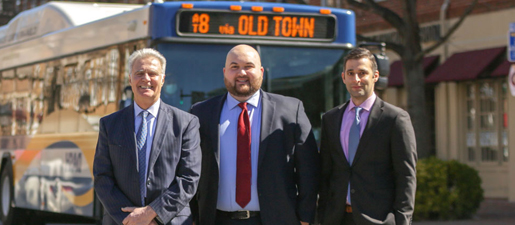Sure, you have heard the warning, “come inside, you don’t want to get heatstroke” but do you really know what heatstroke is, what to do if someone has the symptoms, or how to prevent it? In this blog, we will tackle the 5 W’s (and bonus H) of heatstroke so you and your family can have prevent this life-threatening illness.
Who Gets Heatstroke?
Anyone can fall victim to this warm weather ailment. Certain people, however, are more susceptible to heatstroke than others. The Centers for Disease Control and Prevention (CDC) found between 1999 and 2003 in the United States, an average of 688 people per year died due to heatstroke. In this study, the CDC found that the risk of death by heatstroke was more likely to occur in individuals who were young, old, diagnosed with heart disease, or living with a chronic illness.
What is Heatstroke?
Heatstroke occurs when an individual’s body temperature rises significantly higher than normal. The most common situations that result in heatstroke are spending too much time in the sun while performing strenuous activity and being trapped in an enclosed space with an improper cooling system. The symptoms of heatstroke are defined by The Mayo Clinic as:
- Body temperature of 104 F or higher
- Nausea and vomiting
- Racing heartbeat
- Headache and confusion
- Muscle cramps
- And, in serious cases, a lack of consciousness leading to death
When Can Someone Get Heatstroke?
One common myth of heatstroke is that it only occurs in the summer months. Heatstroke is an issue that can happen any time of the year, especially to people left in cars. According to the NHTSA heatstroke can occur to an individual left in a car when temperatures are as low as 57 degrees Fahrenheit.
Where is Heatstroke Most Likely to Occur?
Heatstroke can happen to people anywhere in the United States. It is more likely to occur, however, while spending considerable time outdoors performing a strenuous activity or when someone has been left in an enclosed space such as a vehicle or poorly ventilated room.
Why Does Heatstroke Occur?
Heatstroke is most frequently the result of an accident such as forgetting to drink extra water and take a break in the shade when mowing the lawn or forgetting there is a child in the backseat of the car before heading into work.
The latter cause recently made headline news when a 10 month old foster child was found dead in a car after being forgotten for over two hours. According to the National Highway Traffic Safety Administration, a child’s body temperature rises 5 times faster than an adult’s, leading to dozens of unintentional deaths each year.
How Can You Prevent Heatstroke?
If you are planning to participate in an outdoor activity on a warm day, remember to:
- Take frequent breaks from the sun, preferably in an air-conditioned room.
- Drink extra water on warm days. Hydration is a great tool to ward off heatstroke.
- Mayo Clinic suggests being aware of medications that may dehydrate or prevent your body from dissipating heat. Speak with your doctor about any concerns you may have regarding your medications and take extra care when spending time outdoors on warm days.
- Wear light colored, loose-fitting clothing made of a breathable fabric such as cotton.
- Most importantly, listen to your body. If you feel the symptoms of heatstroke striking, such as a headache or nausea, stop what you are doing, take a break, and drink some water to help prevent the situation from escalating.
AAA suggests the following ACTions to help prevent accidentally forgetting your child in the car:
- Avoid leaving your child unattended in a car, even for a minute.
- Create reminders to help you check the backseat every time you exit the car. Most car related child heatstroke deaths are unintentional and occur by accident when a parent forgets their child is in the car. One trick you may want to try is always sticking your bag or coat in the back seat requiring you to look back there before leaving your vehicle each time you park. You may also want to set up a system with your childcare providers where they will call you if you are more than 15 minutes late dropping your child off.
- Take action if you see a child alone in a car. If the child is responsive, attempt to locate the parents. If you cannot find the parents or the child is not responsive, call 911 immediately.
Pets, too, are susceptible to heat stroke. There are several steps you can take to help them stay cool during these warm summer days:
- Never leave your pet in the car, even with the window cracked. If you see a pet in a car, attempt to locate the owner or call 911 immediately.
- Remember to keep water bowls filled. If your pet spends considerable time outdoors, you may want to invest in a small, hard-plastic kiddie pool for your pet to cool its whole body in.
- Cesar Milan suggests not allowing your pet outdoors for extended periods of time when the heat index rises above 100 Fahrenheit.
- The Humane Society recommends limiting your pet’s physical activity levels on warm days to prevent the risk of overexertion, even if the pet appears to be enjoying its activity.
Educating yourself and your family is the first step in preventing heatstroke related illness this summer. We hope you have a great summer and remember to stay cool in this DC heat.

